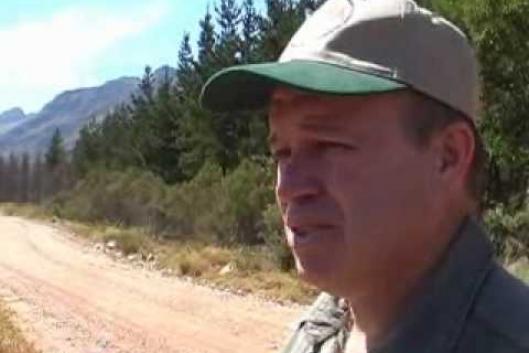At a time when water resources are becoming scarce and ever more threatened by global warming and climate change, a research carried out in South Africa becomes quite timely. After 70 years of monitoring in the Jonkershoek reserve, in the Western Cape Province, the study reveals the impact of monoculture tree plantations on underground water and streamflow. This is very important, given that plantations use significant amounts of water and have expanded greately in South Africa, a country with scarse water resources.
“The Jonkershoek Research Catchments: History and Impacts on Commercial Forestry in South Africa” by Arthur Chapman, was presented on September 2007 to a Field Day of the International Plantation Certification Symposium 2007 “Impact of Certification on Plantation Forestry”, South Africa.
As a follow up and through the collaboration of GeaSphere / EcoDoc Africa - made possible with funds from the Swedish Society for Nature Conservation -, the educational documentary “Plantation Trees and Water Use: Seventy years of Jonkershoek Paired Catchment Experiments” (part 1 and part"> 2) presented Arthur Chapman sharing on a tour the background of seventy years of hydrological research in the Jonkershoek Valley and how the paired catchment experiments work, and how much water trees really use.
The story starts in South Africa in the 1850s, when the region saw their forests depleted by European settlers. To mend that, a program of afforestation was established using exotic species, particularly eucalyptus from Australia and pine trees from the Mediterranean and North America. As early as 1900 concerns grew among farmers because they noticed that streams were declining below the tree plantations.
The concern was eventually taken to the 1935 Fourth British Empire Forestry Conference. The then Secretary for Agriculture and Forestry spoke on the “question of the influence of afforestation on water supply about which a controversy had arisen, especially with regard to the use of exotics, notably the eucalyptus and to a lesser extent the pines”.
The conference acknowledged the problem and agreed to a program of hydrological research. By 1936 construction of infrastructure was underway on weirs (small dams) in the Jonkershoek State Forest and a programme of research was developed. Since that date tree plantations have been monitored in 9 catchments.
The experimental design was based on the paired-catchment approach. The principle is that the streamflow from two untreated catchments are compared, so as to establish their natural relationship. One is then treated, i.e. planted to trees. The change in the relationship between the two catchments after afforestation could then be ascribed to the treatment or influences of afforestation. Twenty nine raingauges, of which 12 were continuously-recording, measured what water was going into the catchments and 8 continuously-recording weirs (6 remain operational) measured what was coming out.
Catchment areas range from 27 – 246 ha, with relatively steep slopes and strong rainfall gradients, caused by orographic forcing in incoming north-west frontal systems during the winter months (the Western Cape having a Mediterranean climate). Mean annual rainfalls of about 1200 mm on the lower slopes can go as high as 3000 mm/a.
Solid and fairly conclusive results on the impacts of tree plantations on water have come out including certain rules of thumb.
Where pines grow the water is about 300-400 mm rainfall equivalent. Namely, the tree plantation is using up to 400 mm rainfall equivalent which means 400 million litres of water per sq Km per annum that does not come out in the streams.
Eucalyptus have shown to be quite more prolific in their water use: 600 mm rainfall equivalent (600 million litres of water per sq Km per annum that does not come out in the streams). In one or two cases a very deep soil profile full of soil moisture used up the rainfall that was coming in as well as the existing soil moisture that would have gone originally to the stream. The streamflow dried up completely and it took 4 years for the soil profile to restablish itself and the streamflow to reappear after the clearfelling.
The onset of streamflow reductions was evident approximately at 5 years, and is strongly associated with plantation age, up to a peak reduction occurring at around 15 years, followed by a gentle decline in water use. A rule of thumb is 30-40 mm streamflow reduction per 10% of catchment planted, at peak water use.
Asked about how much water does each tree use every day, Chapman replied that 50 lts a day is a reasonable standard when the trees are between 5-7 years old. However, in the case of eucalyptus, the average may range from 100 lts to 1 000 lts depending on where the landscape is. Trees next to a stream can use twice that amount of water because they have more access to it.
The conclusions of the study and documentary come in support of an urgently needed debate on the peril of large scale monoculture tree plantations, particularly regarding the issue of water in every country where they are being established.
